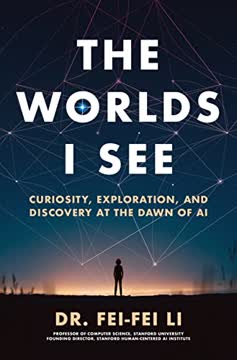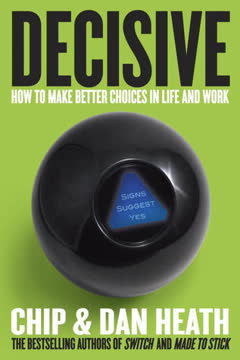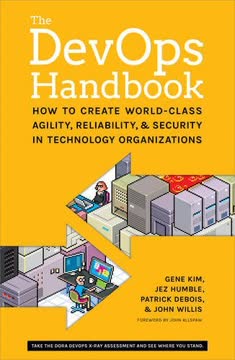Key Takeaways
1. Gamification harnesses game elements to drive real-world behavior
"Gamification is the craft of deriving fun and engaging elements found typically in games and thoughtfully applying them to real-world or productive activities."
Human-Focused Design. Gamification aims to optimize for human motivation in a system, rather than purely for functional efficiency. It leverages game design principles to make non-game experiences more engaging and motivating.
Beyond points and badges. While surface-level game elements like points, badges, and leaderboards are commonly associated with gamification, true gamification goes deeper. It taps into core human drives and creates meaningful experiences that compel users to take desired actions.
Examples of gamified systems:
- Loyalty programs
- Fitness apps
- Educational platforms
- Workplace productivity tools
- Marketing campaigns
2. The Octalysis Framework identifies 8 core motivational drives
"If there is only one thing you remember after reading this book, it should be to focus on motivation by thinking through the 8 Core Drives instead of focusing on features and functionalities."
Comprehensive motivation model. The Octalysis Framework breaks down human motivation into 8 core drives that influence behavior. Understanding and leveraging these drives is key to effective gamification design.
Analyzing existing systems. The framework can be used to evaluate the motivational strengths and weaknesses of any product or experience. This allows designers to identify gaps and opportunities for improvement.
The 8 Core Drives:
- Epic Meaning & Calling
- Development & Accomplishment
- Empowerment of Creativity & Feedback
- Ownership & Possession
- Social Influence & Relatedness
- Scarcity & Impatience
- Unpredictability & Curiosity
- Loss & Avoidance
3. Epic Meaning & Calling taps into higher purpose and exclusivity
"When it comes to Epic Meaning & Calling, it's not about what you want as an individual nor about what makes you feel good. Individuals participate in the system and take action not because it necessarily benefits them, but because they can then see themselves as heroes of a grander story."
Appealing to higher purpose. This core drive motivates people by making them feel they are part of something bigger than themselves. It gives meaning to their actions beyond personal gain.
Creating exclusivity. Making users feel they are uniquely qualified or "chosen" for a task can be a powerful motivator. This taps into people's desire to be special and important.
Examples of Epic Meaning & Calling:
- Wikipedia contributors protecting humanity's knowledge
- Apple's "Think Different" campaign
- Crowdsourcing platforms solving global challenges
4. Development & Accomplishment fuels progress and mastery
"The word 'challenge' here is very important, as a badge or trophy without a challenge is not meaningful at all."
Meaningful challenges. This core drive is about the internal drive for making progress, developing skills, and overcoming challenges. The sense of accomplishment must be earned to be meaningful.
Feedback mechanisms. Providing clear indicators of progress and achievement is crucial. This can be done through points, levels, progress bars, or other visual representations of advancement.
Effective techniques:
- Milestone unlocks
- Leveling systems
- Skill trees
- Achievement badges
- Performance feedback
5. Empowerment of Creativity & Feedback creates "evergreen" engagement
"If something is engaging because it lets you express your creativity, makes you feel successful through skill mastery, and gives you a higher sense of meaning, it makes you feel very good and powerful."
Fostering creativity. This core drive taps into people's desire to engage in creative processes and see the results of their creativity. It's about providing tools and space for expression.
Immediate feedback. Quick and meaningful feedback on creative efforts is crucial. This allows users to iterate and improve, creating a satisfying loop of creation and refinement.
Benefits of Core Drive 3:
- Creates "evergreen" mechanics that don't require constant new content
- Increases user investment and ownership in the experience
- Leads to higher satisfaction and long-term engagement
6. Ownership & Possession motivates through accumulation and investment
"When a person feels ownership over something, they innately want to increase and improve what they own."
Virtual ownership. This core drive leverages people's desire to own and control things, even in digital spaces. Virtual goods, currencies, and customizable profiles all tap into this drive.
Endowment effect. Once people feel ownership over something, they value it more highly. This can be used to increase engagement and retention in a system.
Techniques utilizing Ownership & Possession:
- Collectible sets
- Customization options
- Virtual economies
- Investment of time/effort (e.g. leveling up characters)
7. Social Influence & Relatedness leverages human connections
"We are innate social animals, and naturally endowed with a sense of empathy. We are influenced by what other people feel and think about us."
Social proof. People are heavily influenced by the actions and opinions of others, especially those they relate to or admire. Showcasing popular choices or behaviors can drive desired actions.
Community building. Creating opportunities for users to connect, compete, and collaborate can significantly boost engagement and retention.
Social design elements:
- Leaderboards
- Team challenges
- Social sharing features
- Mentorship programs
- User-generated content
8. Scarcity & Impatience drives action through exclusivity and urgency
"Our brains have a natural desire to want things we can't have."
Perceived scarcity. Making something appear rare or exclusive can dramatically increase its perceived value and desirability. This taps into people's fear of missing out.
Time pressure. Creating a sense of urgency through limited-time offers or countdown timers can prompt quick action to avoid loss.
Scarcity techniques:
- Limited edition items
- Expiring rewards
- Waitlists and invite-only access
- "Flash" sales or limited inventory
9. Unpredictability & Curiosity keeps users engaged through variability
"Variable rewards are one of the most powerful tools companies implement to hook users."
Harnessing curiosity. The human brain is drawn to the unknown. Introducing elements of surprise or mystery can create powerful engagement loops.
Variable rewards. Unpredictable rewards are often more motivating than fixed rewards. This explains the addictive nature of gambling and many social media platforms.
Techniques leveraging Unpredictability:
- Mystery boxes
- Random drops or loot
- Easter eggs (hidden features)
- Evolving narratives
- Rotating content
10. Loss & Avoidance motivates to prevent negative outcomes
"We are much more likely to change our behavior to avoid a loss than to make a gain."
Loss aversion. People are generally more motivated to avoid losing something than they are to gain something of equal value. This can be a powerful driver of behavior.
Opportunity costs. Creating a fear of missing out on potential benefits can prompt action. This ties closely with scarcity techniques.
Examples of Loss & Avoidance:
- Streak maintenance (e.g. Duolingo)
- Expiring points or rewards
- Limited-time offers
- Progress that can be lost if not maintained
11. Balance extrinsic and intrinsic motivators for sustained engagement
"Extrinsic Motivation focuses on results, while Intrinsic Motivation focuses on the process."
Short-term vs. long-term. Extrinsic motivators (rewards, points) can be effective for initial engagement, but intrinsic motivators (enjoyment, mastery) are crucial for long-term retention.
Overjustification effect. Overuse of extrinsic rewards can actually decrease intrinsic motivation. It's important to transition users from external rewards to internal satisfaction.
Balancing strategies:
- Use extrinsic rewards primarily in early stages
- Gradually introduce more autonomy and mastery
- Create meaningful choices within the system
- Foster social connections and community
12. Ethical design considers long-term impact on users
"Good gamification design should consider all 8 Core Drives in promoting positive and productive activities so that everyone ends up happier and healthier afterwards."
White Hat vs. Black Hat. Some motivational techniques (White Hat) leave users feeling empowered and fulfilled, while others (Black Hat) can lead to anxiety and addiction. Ethical design aims to balance these for positive outcomes.
Long-term well-being. While Black Hat techniques can drive short-term engagement, overuse can lead to burnout and negative associations. Designers should consider the lasting impact of their systems on users.
Ethical design considerations:
- Transparency about motivational techniques used
- Allowing users to opt-out or customize their experience
- Avoiding exploitative monetization strategies
- Regular evaluation of user well-being and satisfaction
Last updated:
FAQ
What's Actionable Gamification: Beyond Points, Badges, and Leaderboards about?
- Focus on Implementation: The book emphasizes practical application of gamification principles in life, work, and products, beyond just theoretical understanding.
- Octalysis Framework: Introduces the Octalysis Framework, which consists of eight core drives that motivate human behavior, crucial for designing engaging experiences.
- Real-World Applications: Provides numerous case studies and examples from various industries to illustrate how gamification can enhance user engagement and satisfaction.
Why should I read Actionable Gamification by Yu-kai Chou?
- Practical Guidance: Offers actionable insights for harnessing gamification in projects or personal life, leading to improved engagement and motivation.
- Comprehensive Framework: Provides a deep understanding of the Octalysis Framework, applicable across fields like marketing and education for better user experiences.
- Inspiration for Change: Aims to inspire readers to create meaningful and enjoyable experiences, making a positive impact in their lives and others'.
What are the key takeaways of Actionable Gamification?
- Eight Core Drives: Identifies eight core drives that motivate behavior, essential for effective gamification design.
- Human-Focused Design: Emphasizes designing for human motivation over mere efficiency, leading to more engaging experiences.
- Beyond PBLs: Critiques the misconception that gamification is just about points, badges, and leaderboards, advocating for deeper user motivation understanding.
What is the Octalysis Framework in Actionable Gamification?
- Eight Core Drives: Categorizes human motivations into eight core drives, essential for understanding and designing engaging experiences.
- Visual Representation: Represented as an octagon, aiding in analyzing and designing user experiences effectively.
- Application in Design: Useful for evaluating existing systems or designing new experiences by activating core drives to motivate behavior.
How does Yu-kai Chou define gamification in Actionable Gamification?
- Game-Like Elements: Describes gamification as applying game-like elements to non-game contexts to boost engagement and motivation.
- Human-Focused Design: Stresses focusing on human motivations rather than superficial game mechanics for meaningful experiences.
- Historical Context: Discusses gamification's evolution, highlighting humans' innate desire to make tasks engaging.
What are the eight core drives in the Octalysis Framework?
- Epic Meaning & Calling: Connects individuals to a greater purpose, often seen in volunteer work.
- Development & Accomplishment: Focuses on progress and mastery, represented through points and levels.
- Empowerment of Creativity & Feedback: Encourages creativity and feedback, enhancing engagement.
- Ownership & Possession: Increases motivation through a sense of ownership and protection.
How can I apply the Octalysis Framework to my projects?
- Analyze Existing Systems: Evaluate current products by identifying active and lacking core drives to pinpoint improvement areas.
- Design for Engagement: Ensure at least one core drive is engaged in new experiences to motivate user behavior.
- Iterate and Test: Continuously refine designs based on user feedback and engagement metrics for sustained motivation.
What is the difference between White Hat and Black Hat gamification in Actionable Gamification?
- Positive vs. Negative Motivation: White Hat focuses on positive motivations for long-term engagement, while Black Hat relies on negative motivations for short-term results.
- User Experience: White Hat enhances user experience with enjoyment, whereas Black Hat may lead to burnout or frustration.
- Ethical Considerations: Emphasizes designing experiences that prioritize user well-being and satisfaction.
What are some examples of effective gamification in real-world applications mentioned in Actionable Gamification?
- Nike+: Gamifies exercise by tracking workouts and sharing achievements, engaging multiple core drives.
- Duolingo: Uses points and levels to motivate language learning, effectively engaging users with development and feedback.
- Waze: Incorporates community reporting for traffic conditions, creating a sense of shared purpose and immediate feedback.
What are the four experience phases in the Octalysis Framework?
- Discovery Phase: Initial user interaction, crucial for creating curiosity and interest.
- Onboarding Phase: Early user engagement, important for smooth and motivating experiences.
- Scaffolding Phase: Regular user journey, requiring ongoing challenges and rewards.
- Endgame Phase: Long-term engagement strategies to prevent user drop-off.
What are some effective game techniques mentioned in Actionable Gamification?
- Easter Eggs: Unexpected rewards that create surprise and delight, enhancing engagement.
- Countdown Timers: Create urgency by showing limited time for opportunities, leveraging scarcity.
- Glowing Choices: Highlight important options to guide users and enhance competence.
What are the best quotes from Actionable Gamification and what do they mean?
- “Life is too short to waste on playing bad games.”: Stresses designing meaningful and engaging experiences over mundane tasks.
- “Gamification is the craft of deriving fun and engaging elements found typically in games and thoughtfully applying them to real-world or productive activities.”: Highlights the need for thoughtful design prioritizing user motivation.
- “You play a game not because you have to, but because you enjoy doing so.”: Reinforces the idea that true engagement comes from intrinsic motivation.
Review Summary
Actionable Gamification receives mostly positive reviews for its comprehensive framework on human motivation and gamification. Readers appreciate the practical insights and examples, finding it applicable to various fields. Some criticize the book's length, self-promotion, and lack of academic rigor. Many reviewers highlight the Octalysis framework as a valuable tool for understanding user engagement and motivation. While some question the originality of ideas, most agree the book offers a fresh perspective on gamification beyond points and badges.
Similar Books










Download PDF
Download EPUB
.epub digital book format is ideal for reading ebooks on phones, tablets, and e-readers.




